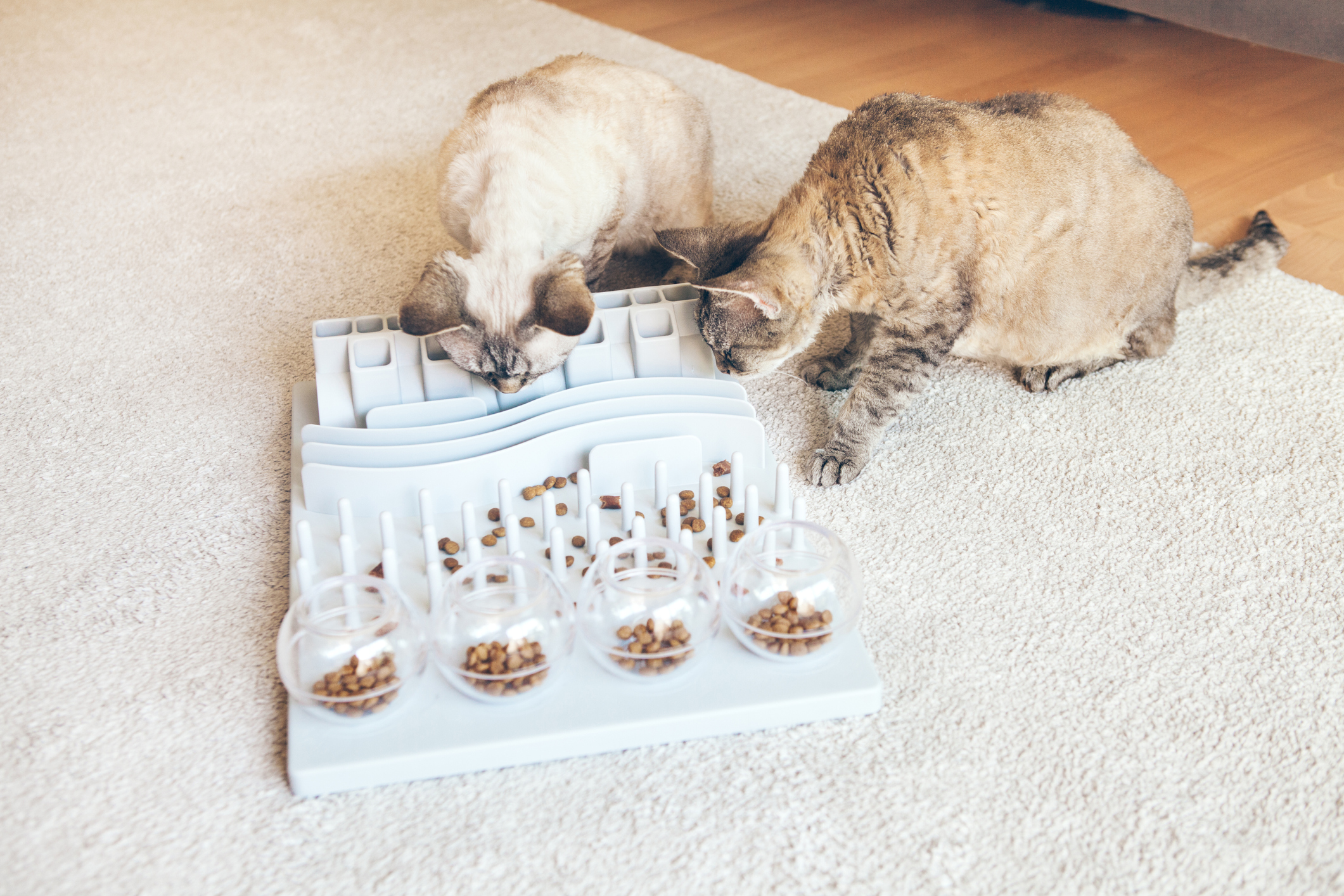
Help Your Cat Eat Slower & Safer with These Tips
Most cat owners are familiar with the ravenous appetite their cats work up when mealtime approaches. Once the food bowl is prepared, it’s difficult to get your feline friend to slow down and enjoy their food. And, for some kitties, their speedy eating might be to their detriment.
Eating too quickly is not good for cats. It can have some unpleasant side effects for their bodies, and it can result in a gross mess you’ll need to clean up, too. Fortunately, you don’t just have to put up with your cat’s race to eat. There are ways to get them to slow down!
The dangers of speedy eating
Your cat might be so excited or hungry to eat that they scarf their food down in seconds flat. Unfortunately, this often results in some negative consequences.
In many cases, cats who eat too quickly end up regurgitating their food. Regurgitation is when your cat expels food they just ate. It’s similar to vomiting, but the food that comes up has not been digested.
Regurgitation often occurs when pets eat too quickly and the food inside their stomach swells, signaling to the brain that your kitty is too full. This triggers the regurgitation to “remove” the excess food.
Frequent regurgitation is neither comfortable nor safe for your cat. Regurgitating food means your cat might not be getting all the nutrients they need to stay healthy, and they might begin to lose too much weight.
Slower eating tips

If your cat is a speedy eater (and a regurgitator) and you’re not sure how to make it stop, there are a few tricks you can try to help them slow down.
- Switch their food: Sometimes, dry kibble causes regurgitation more often than wet cat food because the kibble absorbs liquid in the stomach. If it’s possible to switch your cat’s food from kibble to canned food, their fast-eating problems might be solved. If you can’t switch the type of food you give your cat, consider whether you can change the frequency at which you feed your cat. Instead of two large meals a day, could you split it up into four?
- Use a larger bowl: Many cat food bowls are small, which makes it easy for your cat to devour their food much faster. Some pet parents have found success in slowing their cat’s eating by switching to a larger bowl or even swapping the bowl out for something wider, like a pan or muffin tin. Spacing the food out along the pan will force your cat to take more time between gulps.
- Try an obstacle feeder: If a larger bowl isn’t enough to stop your cat from devouring their food, an obstacle feeder might do the trick. You can either purchase a pre-made one or make your own using household objects. Most store-bought obstacle or “slow feeders” use a mold to shape raised pieces like a maze inside the bowl. Your cat’s food sits between these pieces, requiring more effort to eat and slowing down the feeding process. If you want to make an obstacle feeder at home, you can try adding things like ping pong or golf balls to your cat’s dish. They’ll be forced to move the balls around to get to the food.
- Puzzle toys: Some puzzle toys are capable of holding and dispensing dry cat food instead of treats. The toys typically release food when the cat performs a certain action or moves the toy around enough. This both dispenses food more slowly to prevent regurgitation and helps your pet stay active and stimulated—a true win-win!
- Identify the cause of fast eating: In some instances, cats naturally eat fast due to hunger or something else. However, in other situations, cats eat quickly because of an underlying issue. If you have other pets, your cat might be experiencing food aggression and eat quickly to prevent other pets from stealing it. Or, perhaps they eat rapidly because they aren’t being fed enough or have an underlying health problem like hyperthyroidism. If you’ve tried to slow your cat’s eating habits down to no avail, it might be best to visit the vet to check for signs of stress or health issues. This is particularly true if your cat’s fast eating habits have developed suddenly.
It’s not normal for cats to regurgitate or vomit after they’ve eaten. If your cat regurgitates whole food immediately after eating and none of the above-mentioned tips seem to help, you’ll want to take them to the vet.
The same goes for if your kitty is vomiting a while after eating on a routine basis. The issue there might be related to food allergies or another digestive issue, rather than speedy eating. By working with your vet, you can find a safe feeding solution that keeps your kitty well-fed and happy every day.


